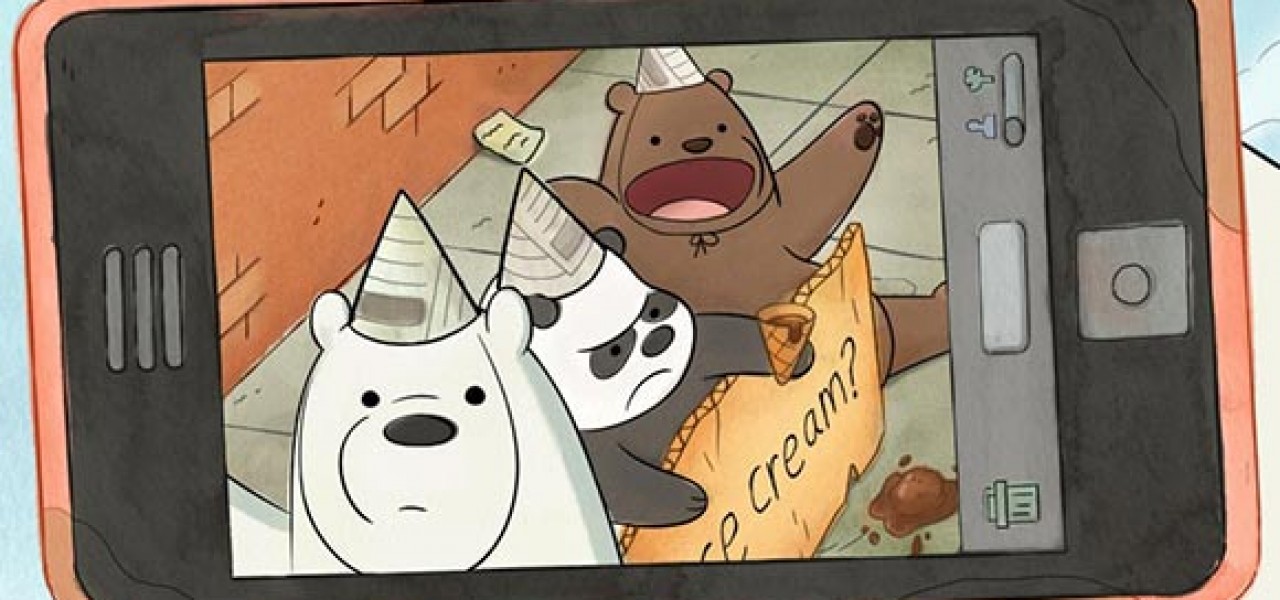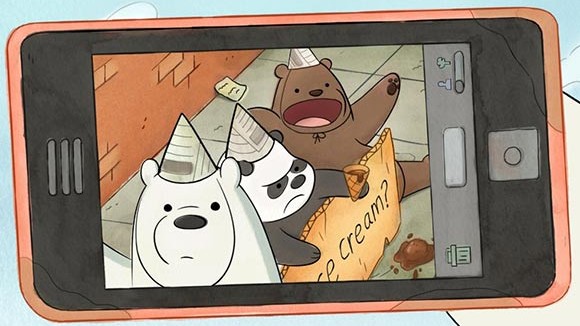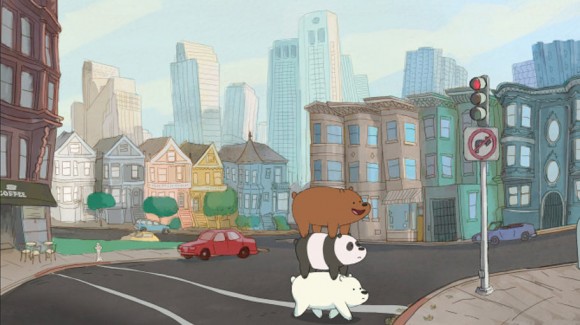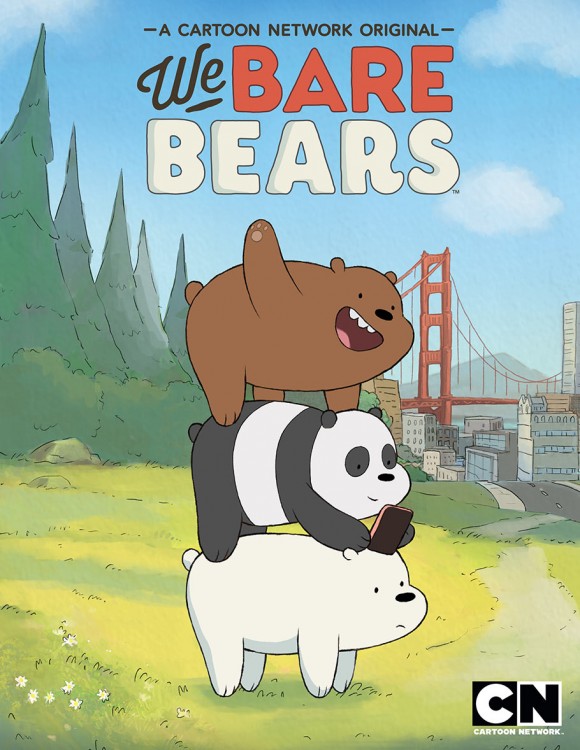

Cartoon Network Will Launch ‘We Bare Bears’ Series in July

Yogi Bear this ain’t. A trio of brother bears master the art of the selfie and more while trying to find their place in the San Francisco Bay Area in We Bare Bears, premiering July 27 on Cartoon Network.
The latest in a line of in-house series developed through Cartoon Network Studios’s Global Artists Program, the show was created by Daniel Chong, who won an Annie Award for his storyboarding on Toy Story of Terror, and has also worked on Cars 2, Free Birds, and The Lorax. Other shows developed through the shorts program include Steven Universe, Clarence, Regular Show, and Uncle Grandpa.
We Bare Bears might seem like it skews a bit younger than those series, anchored as it is by Grizzly (Eric Edelstein), Panda (Bobby Moynihan) and Ice Bear (Demetri Martin), who stack atop each other when they need to leave their three-bedroom cave and explore the surrounding hipster paradise. But according to a press release from Cartoon Network, the brothers spend much of the show chowing at food trucks and chasing “Internet fame.” They’re joined by “a fame-flaunting” Panda named Nom Nom, voiced by Ratatouille’s Patton Oswalt, and their best friend Chloe (Charlyne Yi) who is the only main human character in a cast otherwise packed with animals navigating a metropolis overtaken by the online world.
There’s also Charlie (aka Bigfoot), voiced by Jason Lee. “Bigfoot is a character that the human world has never seen or can’t seem to find but the bears can’t get rid of him,” Chong explained to Variety during the Annecy animation festival. “He likes to stay in their house, taste their stuff, watch their TV, borrow things without asking. He’s kind of the character of Kramer on the show.”

In an interesting bit of irony, We Bare Bears premieres on a Monday night, even though its regular time slot is on Thursday nights, a reflection of the show’s theme of finding one’s place in a technological epoch. “The joke is that the bears are trying to fit into human society but they don’t really,” said Chong.
“Technology becomes a big part of the bears’ world and as much as technology can bring us together it can also make us feel very isolated and creates a distance between people in a lot of ways,” said Chong, who cites Aardman’s stop motion work as one of his biggest animation influences. “That’s another obstacle that the bears try to deal with in the journey to find a place in the world.”

.png)